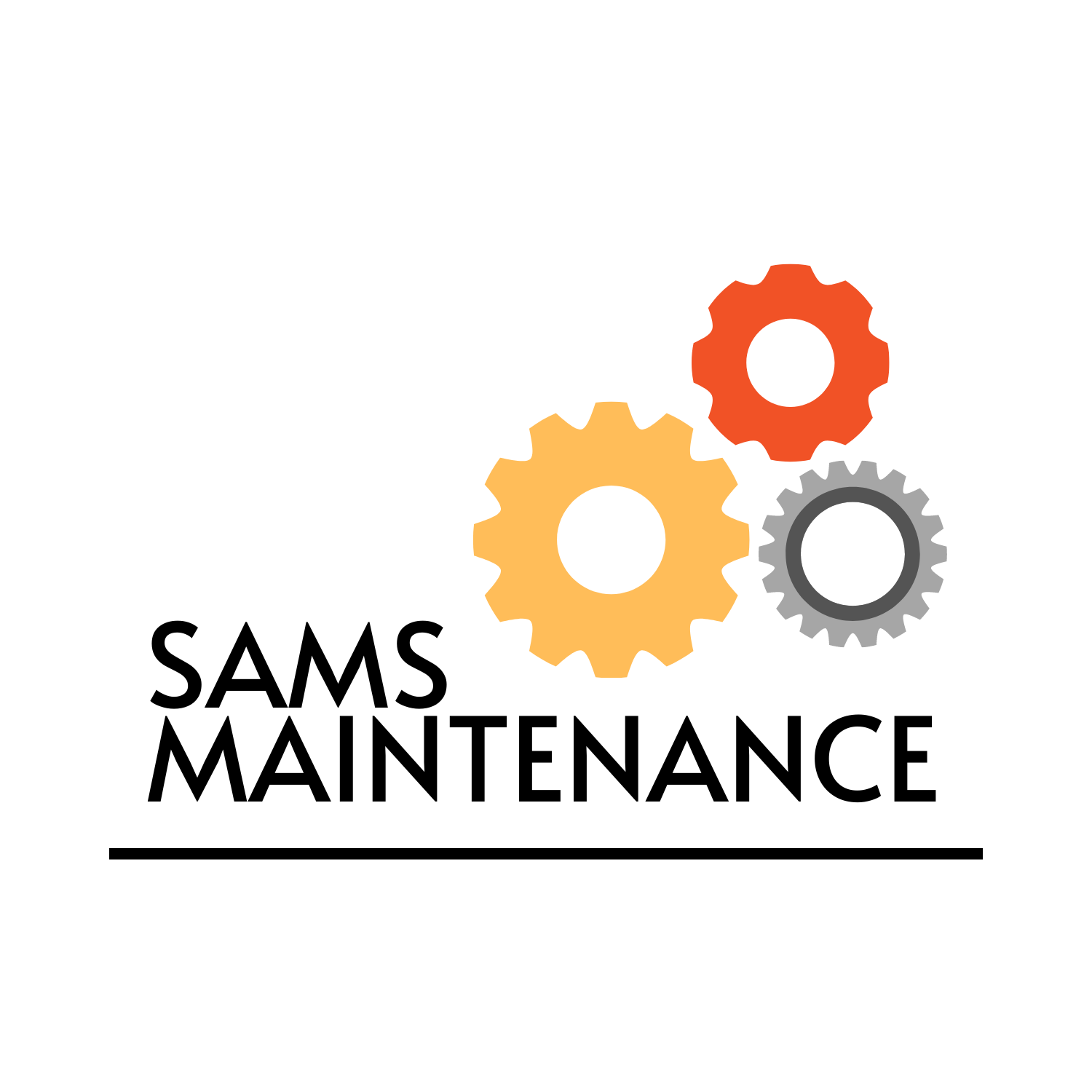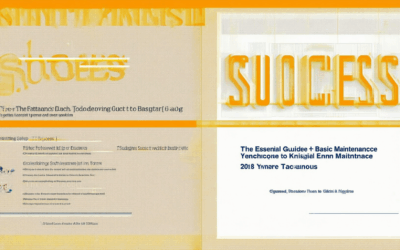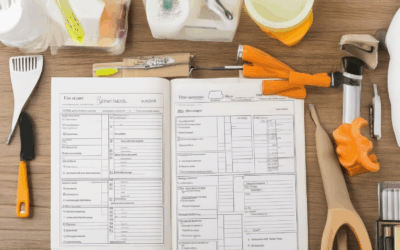Keeping your home in top shape requires consistent effort and attention, which is why routine upkeep is essential for every homeowner. By adopting a regular maintenance schedule, you can prevent minor issues from escalating into major problems, ensuring your property remains safe, comfortable, and value-preserving. Whether it’s checking pipes, cleaning gutters, or inspecting appliances, routine upkeep touches on a variety of tasks that contribute to the longevity of your home. This comprehensive checklist offers actionable steps tailored to address these needs, providing a clear roadmap for maintaining your space. From the 3 Ps of maintenance to the 5 basic functions, this guide explores the key aspects of routine upkeep, offering practical advice that every homeowner should know. With the right strategies in place, you can ensure your home stays in excellent condition for years to come.

What Are the 3 Ps of Maintenance?
The 3 Ps of maintenance—Prevention, Prediction, and Proactivity—are essential strategies for ensuring the longevity and efficiency of your property or assets. These principles work synergistically to create a robust maintenance plan that minimizes downtime, extends asset life spans, and ensures optimal performance.### 1. Prevention Prevention is the cornerstone of effective maintenance. It focuses on addressing potential issues before they escalate. Regular inspections, routine servicing, and proactive measures are key components of prevention. – **Regular Inspections:** Conduct thorough checks on systems like HVAC, plumbing, and electrical components to identify early signs of wear or damage. – **Routine Servicing:** Adhere to manufacturer-recommended schedules for oil changes, filter replacements, and other routine services to keep machinery operating at peak performance. – **Proactive Measures:** Implement safeguards such as installing smoke detectors, fixing loose tiles, or securing outdoor equipment to prevent accidents or damage. By investing in prevention, you reduce the likelihood of costly repairs and extend the useful life of your assets.### 2. Prediction Prediction leverages technology and data analysis to anticipate potential failures or issues before they occur. This approach is particularly effective for complex systems or large-scale facilities. – **Monitoring Systems:** Use sensors, IoT devices, and software to collect real-time data on equipment performance. This data helps identify trends or anomalies that may indicate impending issues. – **Predictive Analytics:** Analyze historical data to forecast maintenance needs based on usage patterns, environmental conditions, and other factors. – **Regular Analysis:** Schedule periodic reviews of system performance reports to adjust maintenance plans accordingly. With prediction, you can address problems early, reducing downtime and preventing unexpected failures.### 3. Proactivity Proactivity involves taking initiative to address maintenance needs as soon as they arise, rather than waiting for a problem to develop. This approach ensures timely resolution and minimizes disruptions. – **Immediate Response:** Address minor issues promptly to prevent them from escalating into major problems. For example, a leaky pipe can quickly lead to water damage if left untreated. – **Scheduled Repairs:** Create a maintenance calendar to ensure tasks are completed before they become urgent. – **Replacement Planning:** Replace aging components before they fail by considering factors like usage frequency and expected lifespan. Proactivity fosters a culture of responsibility and continuous improvement, ensuring that your facilities remain operational and efficient.### Conclusion By integrating Prevention, Prediction, and Proactivity into your maintenance strategy, you can achieve a higher level of reliability and performance for your assets. These three Ps work together to create a comprehensive approach that adapts to the unique needs of your facility, whether it’s a residential property, a commercial building, or industrial equipment.
How to Do Routine Maintenance
Routine maintenance is essential for keeping your home in great shape and preventing costly repairs. Here’s a step-by-step guide to help you tackle it effectively:
General Home Maintenance
- Check for Leaks:** Inspect pipes, faucets, and hoses for signs of wear or damage. Fix leaks immediately to prevent water damage.
- Clean Gutters and Downspouts:** Remove debris like leaves and dirt to ensure proper drainage and prevent water buildup.
- Test Smoke Detectors and Carbon Monoxide Sensors:** Replace batteries and ensure they’re functioning properly to keep your family safe.
- Inspect Windows and Doors:** Look for cracks or gaps that may allow drafts or pests in. Seal them to improve energy efficiency.
HVAC System Maintenance
- Change Filters Regularly:** Clean or replace air filters to ensure your HVAC system runs efficiently.
- Check Belts and Moving Parts:** Inspect belts, fans, and moving components for wear or damage. Replace if necessary.
- Schedule Professional Service:** Have your HVAC system tuned up annually to ensure optimal performance and longevity.
Plumbing Maintenance
- Inspect Pipes:** Look for corrosion or rust, which can lead to leaks. Address issues promptly.
- Check Water Pressure:** Adjust your water pressure to prevent damage to pipes or fixtures.
- Fix Slow Drains:** Use a plunger or drain cleaner to clear clogs and prevent backups.
Electrical System Maintenance
- Check Outlets and Switches:** Ensure they’re working properly and not hot to the touch.
- Inspect Wires and Connections:** Look for frayed wires or loose connections that could cause hazards.
- Test GFCIs:** Ground Fault Circuit Interrupters protect against electrical hazards. Test them monthly to ensure they’re working.
Lawn Care Maintenance
- Mow and Edge:** Keep grass length consistent and edges neat for a tidy appearance.
- Fertilize and Weed Control:** Apply fertilizer as needed and treat weeds to maintain a healthy lawn.
- Inspect for Pests:** Check for insects or diseases and treat them promptly to prevent infestations.
Appliance Maintenance
- Clean Refrigerator Coils:** Keep them free of dust to ensure efficient cooling.
- Descale Appliances:** Remove mineral buildup from water systems to prevent damage.
- Service Major Appliances:** Schedule regular servicing for items like your washer, dryer, and stove to extend their lifespan.
Additional Tips
- Use a Maintenance Checklist:** Create a list of tasks to stay organized and ensure nothing is missed.
- Keep Records:** Note when appliances or systems are serviced and what was done to track maintenance progress.
- Consider a Preventive Maintenance Plan:** Some service providers offer plans tailored to your home’s needs.
By following these steps, you’ll be well-prepared to handle routine maintenance and keep your home running smoothly. Remember to consult professional guides or manuals for specific tasks, and always follow safety precautions when dealing with electrical systems or heavy machinery.

Examples of Routine Maintenance
Routine maintenance refers to regular checks and tasks performed to ensure the proper functioning and longevity of systems, equipment, or structures. Here are some common examples:
- Inspecting Equipment: Regularly checking machinery or tools for signs of wear, damage, or malfunction. This includes looking for loose parts, rust, or fluid leaks.
- Replacing Parts: Replacing worn-out components such as filters, belts, or tires to prevent breakdowns and ensure optimal performance.
- Checking Safety Systems: Testing safety equipment like smoke detectors, fire alarms, or emergency exits to ensure they are functioning properly and can provide reliable protection in case of an incident.
- Monitoring Fluid Levels: Regularly checking and refilling fluids in vehicles, machinery, or heating systems to prevent overheating or mechanical failure.
- Cleaning and Preventing Blockages: Clearing clogs in pipes, vents, or ductwork to maintain airflow and prevent issues like mold growth or inefficient appliance performance.
- Updating Software and Firmware: Ensuring that software and firmware on devices like computers, smart home systems, or industrial equipment are up to date to fix vulnerabilities and improve functionality.
- Testing and Replacement of Batteries: Checking and replacing batteries in devices like flashlights, remotes, or backup power supplies to ensure they are charged and ready to use when needed.
- Examining Roofing and Structural Integrity: Inspecting roofs, walls, and foundations for cracks, peeling paint, or signs of structural weakness to prevent costly repairs later.
- Maintaining Landscaping and Hardscaping: Regularly trimming trees, bushes, and grass, as well as cleaning and sealing outdoor surfaces like patios, decks, and driveways to preserve their appearance and durability.
- Scheduling Preventative Services: Planning routine services for vehicles, HVAC systems, or appliances to catch potential issues before they escalate, saving time and money in the long run.
For more detailed guidance and professional advice, visit our maintenance resources page. Our experts provide step-by-step tips and best practices tailored to your specific needs.

What Are the 5 Basic Functions of Maintenance?
The five basic functions of maintenance are essential for ensuring the longevity and efficiency of machinery, systems, and structures. These functions work together to prevent failures, reduce downtime, and optimize performance.1. **Preventive Maintenance**: This is the most common type of maintenance and involves regularly inspecting, cleaning, and servicing equipment or systems to prevent breakdowns. It focuses on addressing potential issues before they escalate, ensuring smooth operations and extending the lifespan of assets.2. **Corrective Maintenance**: When equipment fails or shows signs of wear, corrective maintenance is performed to repair or replace faulty components. This type of maintenance is reactive but crucial for restoring functionality and safety.3. **Condition-Based Maintenance**: This approach uses monitoring tools and sensors to track the condition of equipment. Based on the data collected, maintenance is scheduled only when needed, reducing unnecessary visits and saving costs.4. **Predictive Maintenance**: Leveraging advanced technologies like AI and machine learning, predictive maintenance analyzes historical data to forecast potential failures. This allows for proactive planning and reduces the likelihood of unexpected downtime.5. **Emergency or Reactive Maintenance**: This type of maintenance addresses urgent issues that require immediate attention. While less predictable, it is vital for minimizing disruptions and ensuring safety during critical situations.By combining these functions, organizations can achieve maximum productivity, cost savings, and operational reliability. Sams Maintenance provides comprehensive guidance and resources to help homeowners and businesses maintain their properties effectively. Whether through preventive measures or reactive solutions, our expertise ensures that your systems remain in peak condition. Explore our detailed guides and expert advice to keep your home or facility running smoothly.
The 7 Key Elements of Effective Maintenance
Maintenance is a critical aspect of ensuring the longevity, functionality, and safety of various systems, structures, and assets. Below are the seven essential elements of maintenance that every professional and homeowner should understand:
- Scheduled Maintenance – Establishing a regular schedule for tasks ensures problems are caught early. This includes routines like HVAC check-ups, plumbing inspections, and roof assessments.
- Preventive Maintenance – Proactively addressing potential issues before they become costly repairs. This involves replacing worn parts and updating systems to prevent failures.
- Task Documentation – Keeping detailed records of all maintenance activities, including dates, actions taken, and any observations, helps track progress and identify patterns.
- Equipment and Tools – Having the right tools and machinery on hand is essential for efficient maintenance. Regularly inspect and maintain these tools to ensure reliability.
- Safety Protocols – Adhering to safety guidelines during maintenance activities reduces the risk of accidents. This includes proper use of PPE and following manufacturer instructions.
- Budget Planning – Allocating funds for maintenance ensures that necessary tasks are completed without delays. Consider unexpected expenses and explore cost-effective solutions.
- Environmental Factors – Be aware of local conditions like weather, humidity, and temperature fluctuations that can affect maintenance needs. Adjust schedules accordingly and address environmental impacts on systems.

What Are the 5S of Maintenance?
The 5S of maintenance is a widely adopted practice in industrial and organizational settings, derived from the Toyota Production System (TPS). These principles help ensure efficiency, safety, and consistency in routine maintenance tasks. Below, we delve into each component of the 5S model:1. **Sort (Seiri)** The first step involves organizing and sorting tools, equipment, and materials. This ensures quick access during maintenance procedures, reducing downtime and errors. Proper sorting can be achieved through labeling, storage systems, and regular audits to discard obsolete items.2. **Set in Order (Seiton)** Once sorted, items are arranged in a logical sequence based on their usage frequency and importance. This setup minimizes wasted time spent searching for tools and streamlines the workflow, enhancing productivity.3. **Shine (Seiso)** Regular cleaning and inspection of machinery and work areas are crucial. Dust, debris, and obstructions can hinder performance and lead to maintenance issues. A clean environment reduces the risk of accidents and extends equipment lifespan.4. **Standardize (Seiketsu)** Establishing standardized procedures and documentation ensures consistency in maintenance practices. This includes creating checklists, setting service intervals, and training staff to follow proven methods. Standardization helps maintain quality control and reduces variability in outcomes.5. **Sustain (Shitsuke)** Continuous improvement and adaptation are key components of sustainability in maintenance. Regular reviews of processes, technologies, and techniques allow organizations to stay ahead of challenges and adopt innovative solutions.By implementing these 5S principles, organizations can significantly enhance their maintenance operations, leading to improved productivity, reduced costs, and safer working environments. At Sams Maintenance, we specialize in helping homeowners and professionals apply these principles to their home maintenance routines, ensuring long-term reliability and peace of mind.
Learn more about our maintenance services




0 Comments